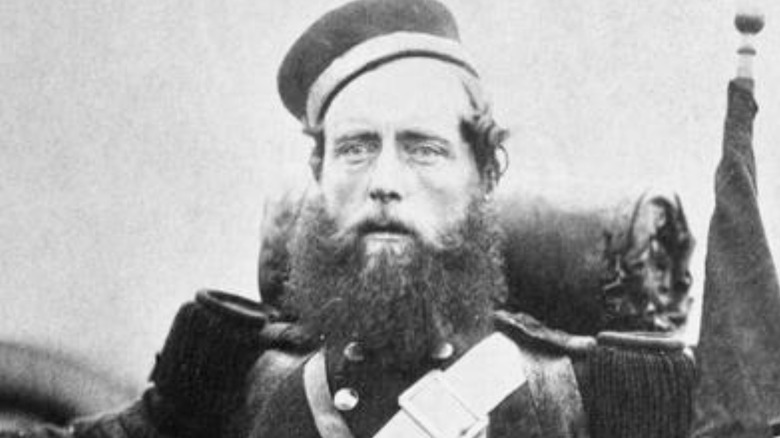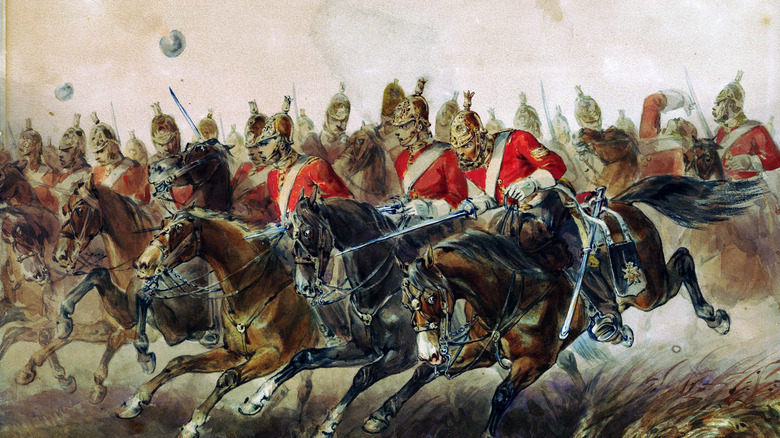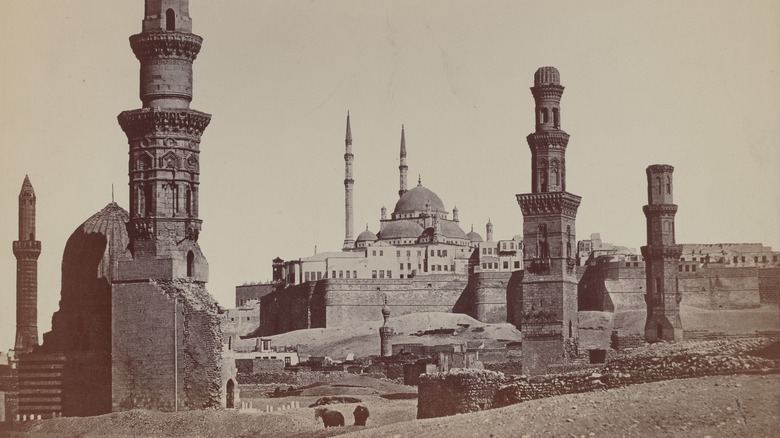The Crimean War Was The First To Feature These Two Things
Not a lot of people know what happened in the Crimean War, which also means very few know that this conflict changed how people learn and feel about war. While people remember the Crimean War for introducing modern nursing and more sanitary wards in the front lines, thanks to Florence Nightingale, it was actually responsible for other things that we still see today.
The Crimean War began as a conflict between Russia and an alliance of France, Great Britain, the Ottoman Empire, and Sardinia, explained Historic UK. Each country has its own reasons for entering the conflict, but the BBC said it was Russia's decision to occupy and annex the Danubian principalities. At this time, the Ottoman Empire was already experiencing decline. But they still had some influence. Britain, for example, wanted to expand their trade with Turkey, while the French sought revenge against the Russians for their defeat in 1812. It was a war of many egos which often clashed, as History pointed. The British were not overly fond of the French, and both European powers tended to belittle the Turkish forces.
Meanwhile, there was some concern over the Christian minorities in Istanbul and within the empire. So even though the Crimean War began as a clash of empires, there was always a tinge of religion throughout the entire conflict.
Even though the Crimean War started in 1853 and ended in 1856, it was one of the first international conflicts that really looked modern. It ushered in many new developments, on and off the battlefield.
The growth of war journalism
When wars happen, world leaders tend to rely on public support to keep fighting. In the past, so much of it was through propaganda. Governments controlled information that went out. Sometimes, news of atrocities will reach the general population, but often it will be too late and too far removed from the events. But starting with the Crimean War, people began learning a little more first hand news. This was all thanks to the presence of the first war correspondents and battlefield photographers.
History wrote that European newspapers began sending civilians to the war front to faithfully report on it. Thanks to the rise of steamships and the advent of the telegraph, it wasn't as prohibitive to send people to different battlefields and have them send over dispatches. One of the most famous war journalists of that time was William Howard Russell. According to Military History, Russell is thought of as the world's first modern correspondent. He wrote for the Times of London and earned the respect of the public and the ire of many a general.
Russell wasn't just writing about the war; he also traveled to Russia to cover the coronation of Czar Nicholas I. He'd been to war before, but it was the Crimean War where he truly made his name. Russell had a very narrative writing style that didn't hold back any criticisms. It was Russell's reporting that inspired Lord Alfred Tennyson to write the poem "Charge of the Light Brigade."
No bloody photos
If Russell was the first modern war correspondent, then the first contemporary war photographers are Roger Fenton and James Robertson. Fenton, who had studied law and painting, was inspired to take up photography. Encyclopedia Britannica said he managed to use government connections to be appointed as an official photographer of the Crimean War. On the other hand, Robertson had been a photographer for a while. He had been working in Istanbul for a time running a photography studio, reported Historic Camera.
Unlike Russell, who wrote all aspects of the war, Fenton only published what he considered acceptable parts of the conflict. He refused to photograph mangled bodies of bloodied soldiers. By the end of his time at Crimea, Fenton had taken around 360 photographs.
History pointed out both Fenton and Robertson sometimes staged photographs. Fenton moved cannonballs onto a road to create a photo that showed the horrors of the war. Robertson was less focused on the impact of the war on people and chose to take pictures of damaged buildings and military installations. Both Fenton and Robertson exhibited their work back in England and gained prominence as photographers, even if they never intended to capture the bloodier aspects of war.
These days, journalists and war photographers are embedded with the military. They go head-first into battle, ready to tell the real story of the war to the public back home and to the world. And it's thanks to the Crimean War that they have jobs.


